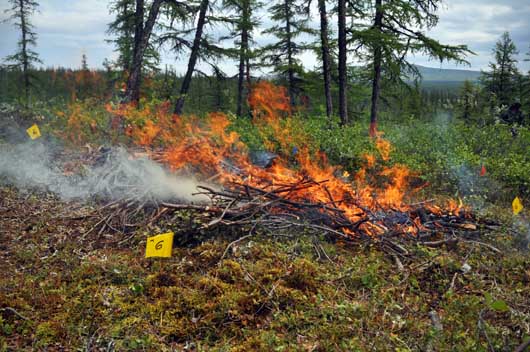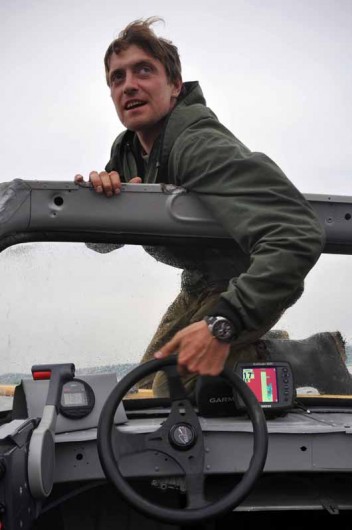These past couple of weeks have been amazing. Actually, in truth, amazing doesn’t even come close to what the experience has been. To begin on our past adventures: several of us burned Heather Alexander’s experimental plots, which will be seeded and monitored for larch tree regeneration hopefully over the next few years. The idea is that with warming climate, fire regimes are changing, and forest fires can burn more intensely. With this higher intensity, more of the organic layer on top of soils burns off, making it easier for the larch trees of Siberia to regenerate (we think). This leads to very high density larch stands that resemble bamboo. However, as a scientist, you can’t just assume this…you must test your hypothesis! So, after over a year of Heather’s planning, a few days of gathering over 1,000 pounds of fuel, Nikita’s help, and much hard work, the experimental plots burned successfully!

Experimental Fire Plot
Immediately after burning, Peter and I set up some experimental moss plots. As I explained in a previous blog entry, mosses are an extremely important player when it comes to insulating the permafrost. With the changing fire regimes and higher densities of deciduous larch trees, what happens to the moss? Does leaf litter impede the moss growth? Peter and I set out for this answer. In order to do this we found 20 beautiful moss patches, gathered lots of larch and dwarf birch leaf litter, and then on 4 moss patches we put high amounts of larch leaf litter, on 4 patches low amounts of larch leaf litter, high amounts of dwarf birch litter on another 4, low amounts of dwarf birch litter on 4, and the last 4 we left alone as our controls. Before adding the leaf litter, we collected samples from the moss plots to measure how much chlorophyll the mosses had before treatment. After treatment, we will measure chlorophyll again to see if photosynthetic activities have changed. In addition to this, we measured many characteristics about the moss, like the length of the green moss, soil moisture, depth until hitting the permafrost, etc. We then used all of these other measurements to look at mosses along a natural larch density gradient we found. We’re finding that mosses seem to do pretty well until a certain larch density (or larch leaf litter) threshold is reached, and then, all of a sudden… no mosses! This could have many implications, and I will discuss more of those after we finish the project. Along with all of the science that has been going on, much fun and exploration has been as well. Last week, Nikita drove Heather, Peter, Eric, Dylan, Logan, and I to Pleistocene Park on one of the boats, where we sampled a high density larch forest. Nikita has helped us a lot with many tasks, and our terrestrial team has learned that when Nikita says “don’t worry”, you don’t worry. So…we named our crew: Terrestrial ‘Don’t Worry, We’re With Nikita’ Team.

Don’t Worry, We’re With Nikita
When we returned from Pleistocene Park, the majority of The Polaris Project sailed down the Kolyma River south to Duvanny Yar. It was incredible. Mammoth bones everywhere.



